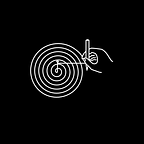Game World
After the experiments that were dealing with analysis, generative systems and data curation, it is time to have a look at the third learning principle, called reinforcement learning. This method is a mixture of the previously described methods, If you ask, I would call it environmental learning, since the solution for a specific problem is defined and learnt from the behaviour (feedback) of the environment. Pre-trained agents are fascinating in terms of behaviour, so I am thinking about a strange relationship between these skills and the human player. Competing against these artificial agents directly would be too direct and unfair (they are dumb in the beginning, but they get quicker than humans slowly during the training process), so I decided to build another kind of interaction with them: the user should help one of them achieving its goal, while constantly avoiding the other achieving the same goal.
This experiment is like an indirect interaction, derived from games like Lemmings, SimCity or other strategic games, where the user sometimes reconfigures the environment, then acts like an observer, leaving space for causalities and possibilities to happen within those directed constrains. I like the word we use for making music: musicians usually play their instruments, so it is also part of these experiments to make music (or event based sonification if you prefer) not in terms of realizing musical ideas, but more like leaving traces of problem solving steps within an abstract playground.
This basic, minimal & constrained application has many possibilities in it, I already started to turn this thing into a more complex sonic toy, generating levels, scenes, time structure, involving philosophical statements from mid 20th century experimental thinker & composer John Cage, leading to the birth of my forthcoming app, called Atlås, that is available to download as of October 20, 2017.
Meanwhile, play with the experiment in your browser here, or get the code from the research repository. The original sketches were built with p5js (using webaudio) and reinforcejs.
The magic circle
“The arena, the card-table, the magic circle, the temple, the stage, the screen, the tennis court, the court of justice, etc., are all in form and function play-grounds, i.e., forbidden spots, isolated, hedged round, hallowed, within which special rules obtain. All are temporary worlds within the ordinary world, dedicated to the performance of an act apart. ” (in: Homo Ludens, Johan Huizinga, p. 107)
“Somehow we got the idea that fun refers to enjoyment, and that games offer us special access to that enjoyment. But games and fun are not connected because games are already intrinsically entertaining or enjoyable, but because games are already intimately associated with playgrounds. Games are experiences we encounter through play.
Play is the act of manipulating something that doesn’t dictate all of its capacities in advance, but that limits its capacities through focus and exclusion. […] Play is everywhere, in anything we can operate.” (in: Play Anything, Ian Bogost, p. 92)
“[advanced speed of browsers] encouraged me to continue the development. Along the way I was also labeled as “insane” for working on this project by a good friend of mine, which only made me further step up my efforts — when people call you insane you know you’ve hit on something interesting!” (in: Data Science Weekly, Andrej Karpathy)
“Even if play produces fun, the basic experience of play is not letting loose or doing whatever you want, but carefully and deliberately working with the materials one finds in a situation. Play is not only fun, not only a child’s activity, but also exploring the free movement present in a system of any kind, where system might refer to a social situation as much as a machine assembly. […] Thinking worldfully, it is better to think of play as a condition of the universe rather than a human activity — everything is ‘at play.’ ” (in: Play Anything, Ian Bogost, p. 113)
“It’s like gaming sometimes, trying to guide it. There’s some very basic AI in there — I mean only using “if” statements, conditionals, if-the-situation-is-this-then-do-that type things. It’s as basic as a game AI, if you look at the AI for the characters in a game, it’s just a chain of “if” statements, basically. It’s very much on a level to that, really. So playing music on it is about as fun as playing Grand Theft Auto, doing random shit with pedestrians, seeing if you can get someone to run up a wall or whatever. If I can get the musical equivalent of that, I’m generally quite happy.” (in: Autechre interview: Joe Muggs goes deep with the seminal Warp Records duo, Sean Booth)
Hacking, altering (bending) existing contexts is a good way to learn not only from people but from systems (machines) around us. Such as the machine starts understanding its environment and learn from the patterns in it, we humans need new kind of learning methods and existential attitudes such as critical engineering, ethical technology awareness, conscious consuming strategies, reasonable activism among others.
In the past few decades, the role of media audience turned into media (thus software) user, becoming a central element in the whole experience: understanding narratives, revealing stories, sharing information needs active participation. This human centered approach is based on conditions that previously did not take part in the process of designing content: cognitive, physical, ergonomical actions and limitations, metadata, context of the environment, metrics, role and frequency of the usage. The future of media culture is shifting from classic time based contexts to the worlds of playgrounds, where users create, play, share and reflect on their thoughts and experiences.
I find the act of play a key role in today’s creative playgrounds, where gamification is a practical component and an interesting research field within music creation, drawing, education and storytelling.
